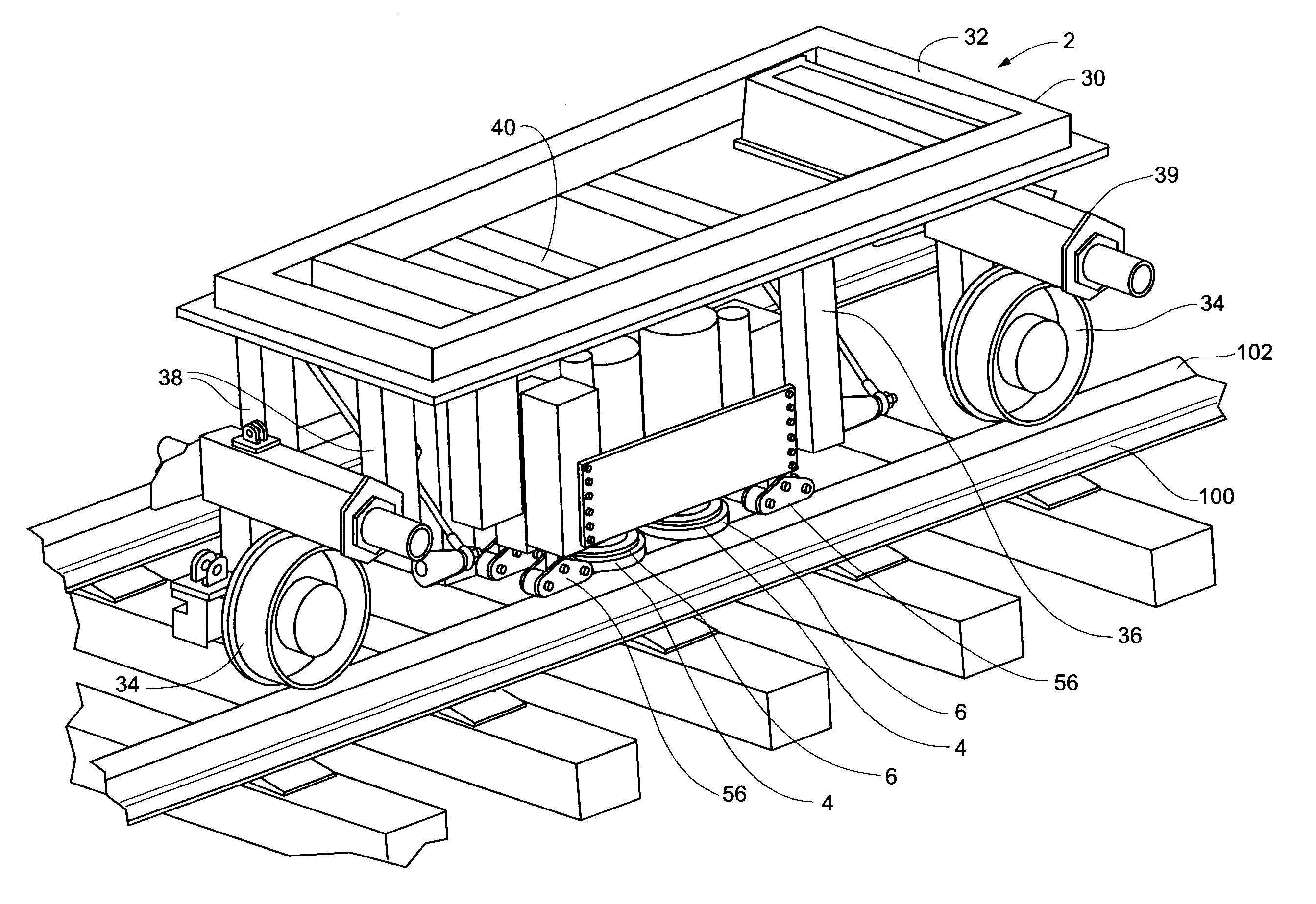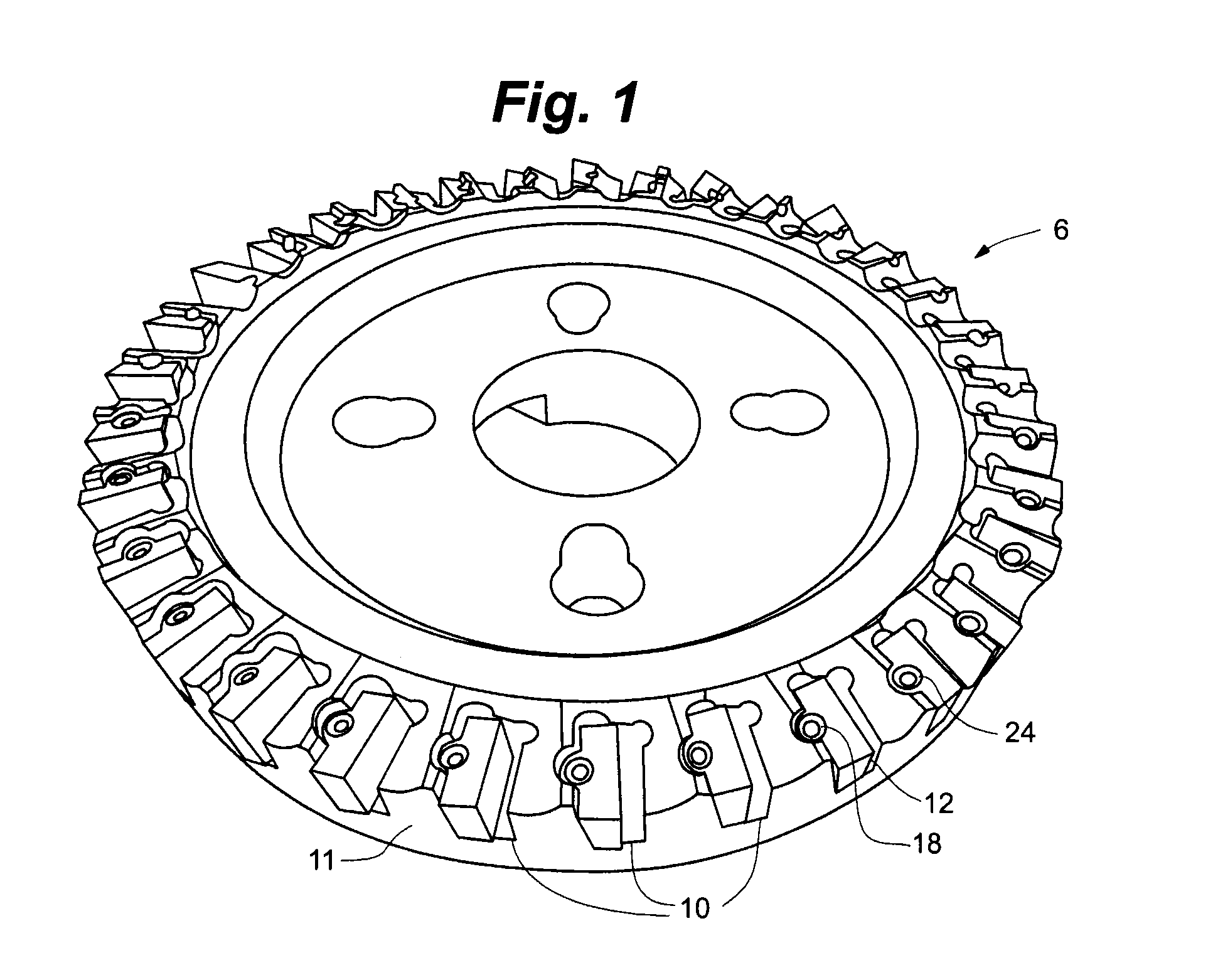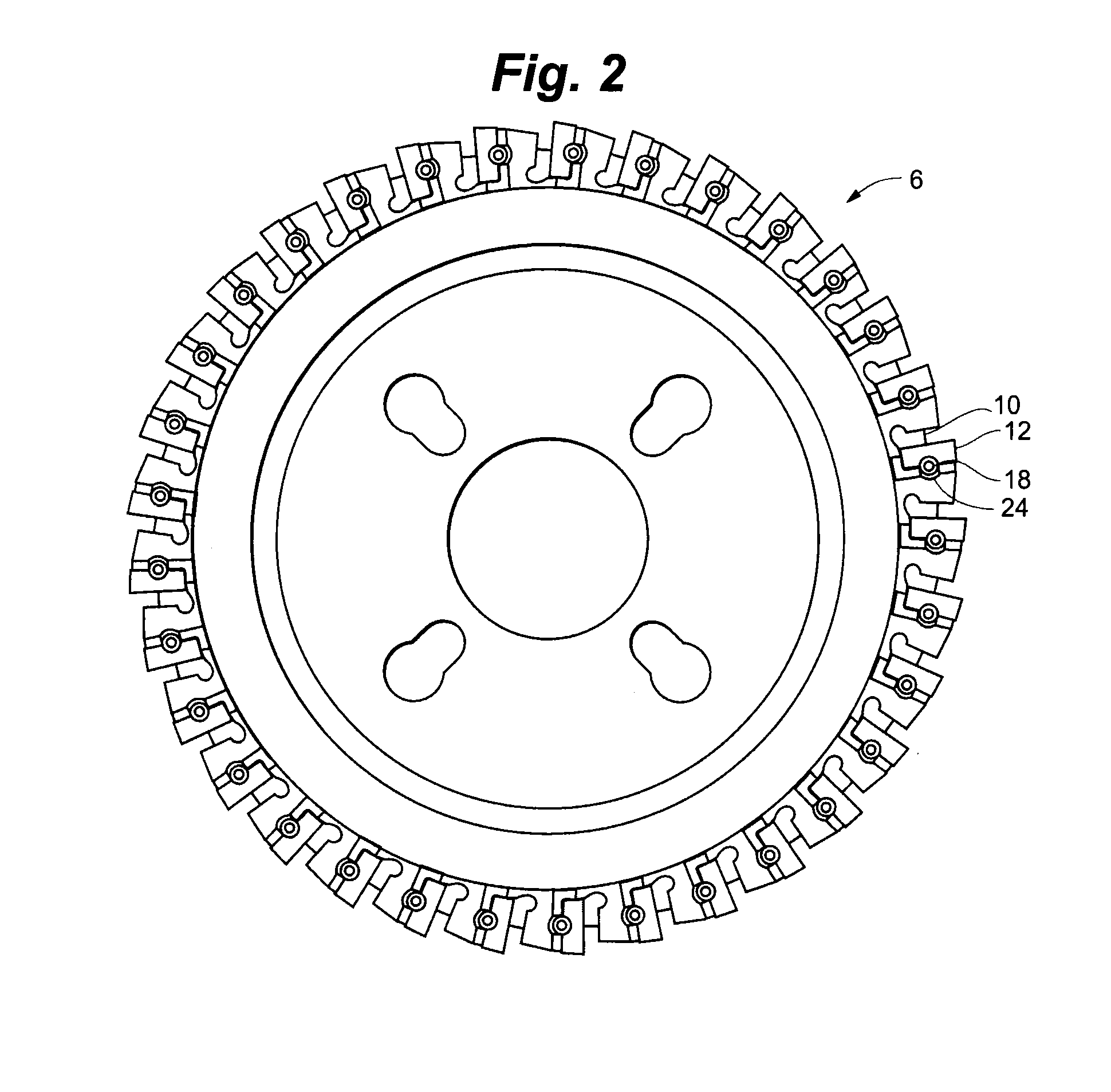Method and apparatus for milling of railroad track
a technology for railroad tracks and milling plates, applied in shaping cutters, manufacturing tools, ways, etc., can solve problems such as cracks, deformations, irregularities, and deformations along the track surface, and achieve the effects of reducing downtime, improving the useful life of the milling plate, and easy removal and replacemen
- Summary
- Abstract
- Description
- Claims
- Application Information
AI Technical Summary
Benefits of technology
Problems solved by technology
Method used
Image
Examples
Embodiment Construction
[0033]As illustrated in FIGS. 1 and 2, a representative embodiment of a milling plate 6 according to the present invention generally comprises a plurality of blade slots 10 each having a corresponding adjustable vice grip 12 and milling blade 14. The plurality of blade slots 10 are generally positioned proximate to a perimeter edge 11 of the plate 6 and each blade slot 10 further comprises a threaded slot bore (not shown) along one side of the slot 10. Each adjustable vice grip 12 further comprises a threaded vice bore 18 corresponding to the threaded slot bore of one of the plurality of slots 10. As shown in FIGS. 4 and 5, an embodiment of the milling blade 14 can comprise a generally rectangular shape having an angled milling surface 19 for milling the track surface
[0034]As shown in FIGS. 1-2, each milling blade 14 is insertable into a corresponding slot 10 and retained by the adjustable vice grip 12. The adjustable vice grip 12 further comprises a flat side 20 for aligning the vi...
PUM
| Property | Measurement | Unit |
|---|---|---|
| Depth | aaaaa | aaaaa |
| Height | aaaaa | aaaaa |
| Perimeter | aaaaa | aaaaa |
Abstract
Description
Claims
Application Information
 Login to View More
Login to View More - R&D
- Intellectual Property
- Life Sciences
- Materials
- Tech Scout
- Unparalleled Data Quality
- Higher Quality Content
- 60% Fewer Hallucinations
Browse by: Latest US Patents, China's latest patents, Technical Efficacy Thesaurus, Application Domain, Technology Topic, Popular Technical Reports.
© 2025 PatSnap. All rights reserved.Legal|Privacy policy|Modern Slavery Act Transparency Statement|Sitemap|About US| Contact US: help@patsnap.com



